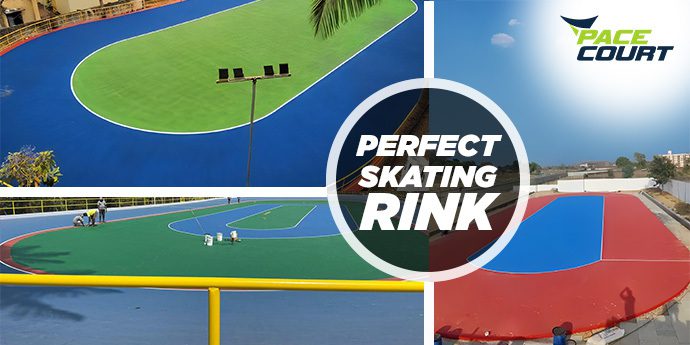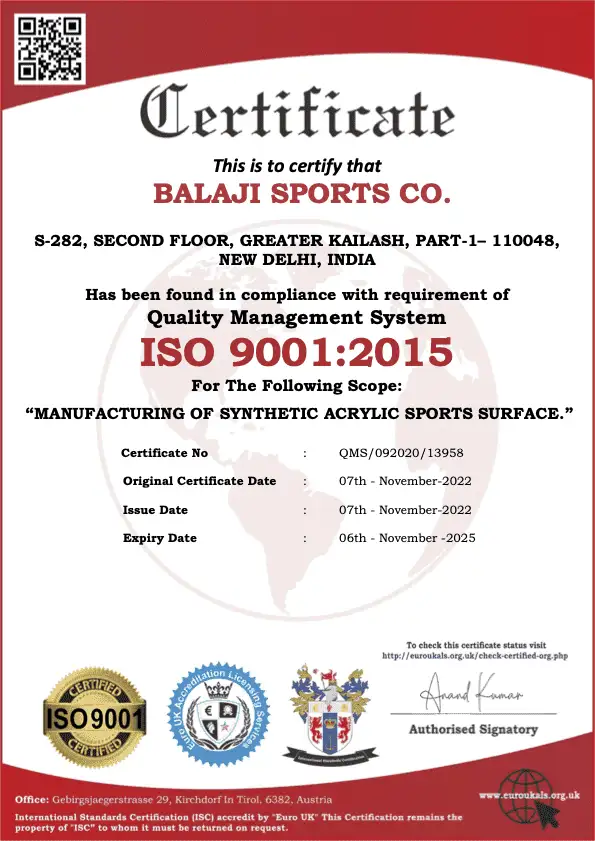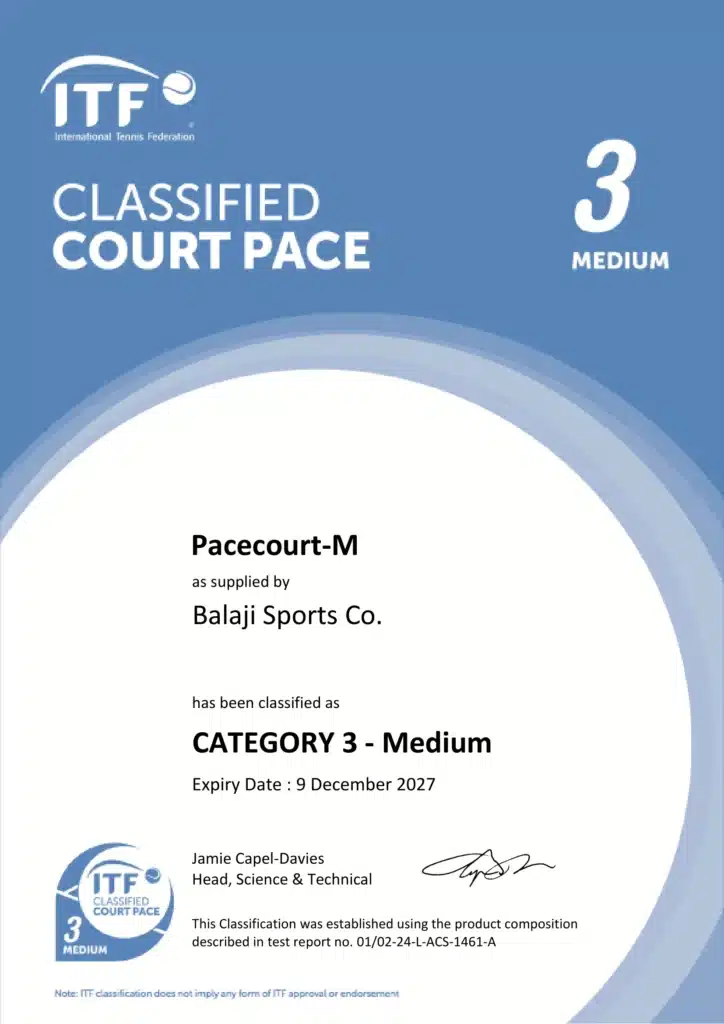Outdoor Skating Rink Flooring: A Complete Guide
Building an outdoor skating rink that’s durable, safe and performs starts with one key decision—choosing the right floor. The surface affects every skater’s experience, from casual fun to high-speed training. Outdoor skating rink flooring face weather exposure, wear and tear, and the need for consistent traction, so the floor material is the foundation of long-term performance and safety. This guide covers everything you need to know to make an informed choice: types of outdoor skating rinks—roller skating rink, inline tracks and multipurpose surfaces—and key floor requirements like slip resistance, UV stability and maintenance. It also compares materials and installation and maintenance tips to get the most out of your rink. Find out why Pacecourt’s acrylic floor offers the best glide, grip, and stability, as well as how it outperforms traditional options with premium synthetic acrylic floor material built for performance. Types of Outdoor Skating Rinks Roller Skating Rinks Public roller skating rinks are for recreational and competitive skaters who wear quad or inline skates. They exist in public parks, schools, community centers and commercial sports venues. The most critical aspect of a roller skating rink is the surface. It should be smooth for smooth movement but grippy enough to avoid slips and accidents. An adequately installed roller skating surface minimizes the risk of injury and enhances performance for both casual and competitive skaters. Inline Skating Tracks Inline skating rink surfaces are built for speed, agility and technical movement. These are utilized for training and competition where traction and shock absorption are paramount. The skating floor must handle rapid skating, tight turns and rapid stops while reducing fatigue and diminishing skater strain. Multi-purpose Skating Surfaces Multi-use courts involve skating alongside other sports, such as basketball or volleyball. Multipurpose skating areas need extremely tough, weatherproof flooring that has good grip and low maintenance. Versatility is important because the floor needs to support various activities without sacrificing performance or safety. Synthetic acrylic flooring is the best option. Key Requirements for Outdoor Skating Rink Flooring Durability and Weather Resistance: Outdoor skating rinks are subjected to the elements 24/7. Flooring must be able to resist UV radiation, water and temperature extremes. Materials that will crack, warp or fade with time will compromise safety and performance. Slip Resistance and Safety: Safety first for all skating surfaces. A nonslip texture is important to minimize accidents, particularly at high speeds or high-intensity skating. The flooring must exhibit even traction in dry and slightly moist conditions to ensure a safe ride for all the users. Smoothness and Performance: The ideal skating rink surface is smooth and seamless so skaters have a smooth flow when executing tight turns or quick maneuvers. An uneven or rough surface will impede wheel movement and cause fatigue, particularly in the event of long sessions. UV Stability: UV exposure over time will weaken subpar materials. UV-stable flooring will not degrade in color, surface finish or structure over time, even in full sunlight. Ease of Maintenance: Low-maintenance flooring translates into reduced upkeep expenses. Perfect materials won’t hold dirt, water and wear; they just require periodic cleaning or recoating. Best Flooring Materials for Outdoor Skating Rinks Synthetic Acrylic Flooring Pacecourt’s acrylic flooring is the best for glide, grip and stability for outdoor skating. This premium synthetic acrylic flooring is designed for roller and inline skating and performs well in all weather. Slip-resistant surface for safety, smooth finish for fluid movement and control. UV-resistant and durable, synthetic acrylic is for both recreational and professional use. Low maintenance and lasting for years, it is one of the most reliable roller skating rink floor materials. Features: Modular Tiles / Interlocking Tiles Modular tiles are great for temporary or DIY installs. These interlocking systems are easy to install, move or replace for multi-purpose spaces. Features: Concrete with Surface Coating Concrete with synthetic coating is a durable and cost-effective solution for permanent rinks. Features: Asphalt with Acrylic Coating Asphalt with acrylic overlay is a versatile surface for high-traffic outdoor public skating rinks. Features: Comparison: Synthetic vs Traditional Flooring Feature Synthetic Acrylic Concrete Modular Tiles Durability High Medium High Installation Time Moderate Long Short Maintenance Low Medium Low Skating Performance Excellent Good Good Installation Considerations Proper skaring rink installation is the secret to the long-term performance and safety of any outdoor skating rink. It begins with site preparation, meaning clearing the ground of trash and a clean, stable surface. An unevenly prepared or poorly prepared site can lead to structural problems and impact skater performance. Drainage planning is a big one, too. Rinks outdoors receive rain and moisture, so you must have adequate drainage systems installed to avoid water pooling, which can impair flooring and be hazardous. Surface leveling provides a smooth skating experience. Flat surfaces can lead to a heightened risk of falls and decrease overall performance. Weather also plays a factor—installation is optimally performed in dry, moderate weather to provide adequate adhesion and curing of material. However, DIY is an option, and employing professional contractors for roller and inline skating rink flooring ensures proper implementation, material handling, and long-term reliability. Maintenance and Longevity Tips An outdoor skating rink surfaces needs to be maintained for long-term performance, safety and aesthetics. Regular surface cleaning removes dirt, debris and moisture buildup, which can wear or reduce traction. This simple process keeps the rink safe and fully functional for all skaters. For synthetic acrylic flooring, re-coating is required every few years depending on usage and environmental exposure. This process rejuvenates the surface, maintains the slip resistance and extends the life of the surface. Fixing cracks or surface damage as soon as possible is key. Even small flaws can get worse over time and compromise both safety and performance. Fixing them early keeps the surface intact. Seasonal checks, especially after heavy rain, intense sun or freezing temperatures, allow you to identify potential issues early. This proactive approach saves you from costly repairs and keeps the rink a high-quality, durable space all year round. Cost of Outdoor Skating Rink Flooring The cost of an outdoor skating




